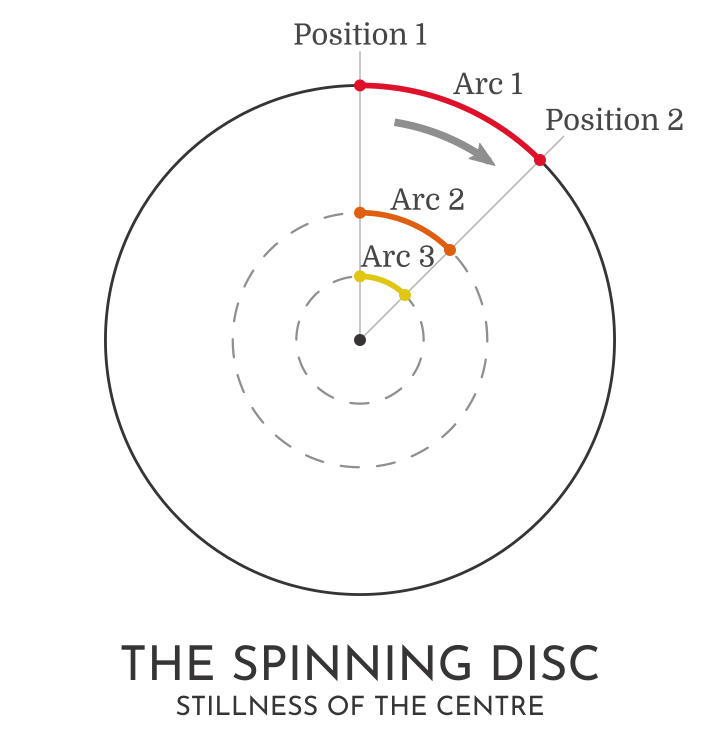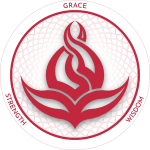The post, Understanding Space/Time, sets up the premise that the centre of a Circle has no Space and therefore experiences no Time. This post will continue with that assertion by using an example of a spinning disc to reinforce the claim.
A rigid disc spinning about its centre is represented in the diagram below.
As this disc rotates from Position 1 to Position 2, it can be observed that the distance travelled along each of the three arcs deceases, the closer the arc is to the centre of rotation.
That is, Arc 3 is shorter than Arc 2 which is shorter than Arc 1. (Arc 3 < Arc 2 < Arc 1)
The time to move from Position 1 to Position 2 is the same for all three arcs, given that the disc is rigid. So what this reduction in length of the three arcs indicates, is that the speed of movement along each arc is also decreasing, the closer the arc is to the centre of rotation.
From this finding, it can be extrapolated that the closer the arc of rotation is to the centre of rotation, the slower the movement along that arc from Position 1 to Position 2.
Extending this reasoning further, when the arc of rotation finally reaches the Absolute Centre of rotation, which is also the centre of the disc, movement ceases altogether.
If considered from the perspective of the points placed at either end of the three arcs, it is apparent that these end points are converging as the arcs get closer to the centre. Then, at the Absolute Centre of rotation, they merge and become one point. Which shows that there is no movement there, because there is no longer any separation between the two points.
This is the case no matter how fast the disc may be spinning.
The Absolute Centre of rotation, Transcends the movement of rotation.
The Absolute Centre of rotation, Transcends Space/Time.
At the Absolute Centre of rotation, there is nothing but Stillness, Silence, Singularity.
Clarification
It should be noted that the important aspect here is the Centre of Rotation. The centre of the disc is only incidental in this case.
The reason why a disc has been chosen in this example, is that the Centre of Rotation happens to coincide with the centre of the disc, which would also be the centre of mass, if the disc was an actual physical item of uniform density.
Rotation of an object around a point that is not its centre of mass, creates an imbalance which then induces vibration at sufficient speeds.


